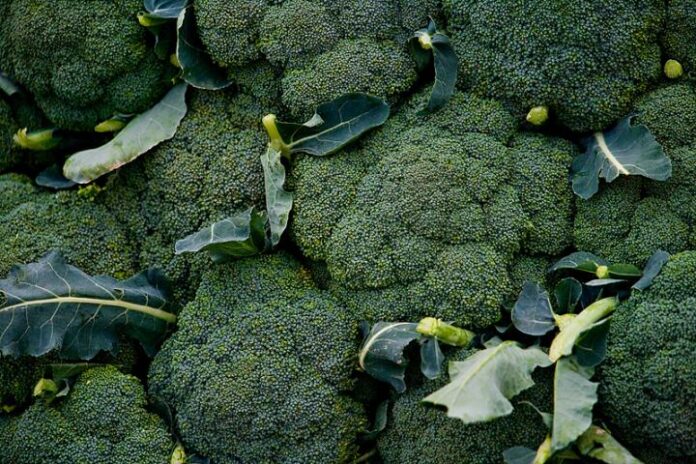Broccoli is a hardy vegetable that develops best during cool seasons of the year. Two crops per year (spring and fall) are possible in most parts of the country, especially with continuous improvement in fast maturity and heat tolerance that extends the life of broccoli through all but the hottest parts of the season. It belongs to the crop family (Brassica oleracea), which includes cabbage, kale, cauliflower, kohlrabi and Brussels.
If you want to sow seeds directly in the garden, do so about 85 to 100 days before the average first fall frost in your area. If you prefer to grow from transplants, figure the date for getting your plants in the ground by adding 10 days to the “days to maturity” for the variety you’re growing and then counting backwards from your expected first fall frost date.
Broccoli grows best in full sun and where the soil is slightly acidic—with pH between 6.0 and 6.8—fertile, and well-drained, yet consistently moist and rich in organic matter. The right pH and the organic matter help ensure that nutrients, particularly essential micro-nutrients like boron, are readily available. A boron deficiency can cause broccoli to develop hollow stems, but adding too much is toxic to plants, so a soil test is essential.
Fall broccoli has specific spacing requirements. If you’re gardening intensively in a raised bed, space your plants 15 to 18 inches apart; for gardening in rows, set the transplants 18 to 24 inches apart within the row and space the rows 24 to 36 inches apart. Be sure to set transplants slightly deeper in the ground than they were in the pot.Broccoli can germinate in soil with temperatures as low as 40ºF.
Broccoli is a moderately heavy feeder, so work in two to four inches of rich compost or a thin layer of well-aged manure before planting. Rabbit manure is a personal favorite, though most any aged manure or compost produces big and tasty heads.
After you’ve harvested a plant’s central head, you can encourage extended side-shoot production by scratching a little nitrogen-rich fertilizer such as fish meal or aged manure into the soil around its base. The best time to sidedress sprouting types that have overwintered is in late winter or early spring when growth resumes.
Provide consistent soil moisture with regular watering, especially in drought conditions. Some varieties of broccoli are heat tolerant, but all need moisture.Do not get developing heads wet when watering.
4. Shelter from the cold.
Freezing temperatures can cause chilling injury that turns buds purple and sometimes softens heads, though they are still good to eat. Just don’t let heads freeze and thaw repeatedly. Offer cold-weather protection with floating row covers, which provide an additional four to eight degrees worth of warmth—shielding harvests from heavy freezes and extending the season by up to four weeks, or cover broccoli with tunnels or a cold-frame, which can boost daytime temperatures by 10 to 30 degrees.
5. Protect against pests.
Row covers provide some protection from pest insects, but the best protection is to grow healthy plants—and that begins with healthy soil.Insect pests are generally less prevalent in fall than in spring. But if your broccoli does suffer an infestation of destructive caterpillar pests such as cabbage loopers, you can control them with Bacillus thuringiensis var. kurstaki, a naturally occurring bacteria that stops the pests from chewing but is harmless to beneficial insects.
6. Harvest and storage.
In terms of timing: Harvest broccoli when the buds of the head are firm and tight before the heads flower. If you do see yellow petals, harvest immediately.For best taste, harvest in the morning before the soil heats up.Cut heads from the plant, taking at least 6 inches of stem.
Most varieties have side-shoots that will continue to develop after the main head is harvested. You can harvest from one plant for many weeks, in some cases, from spring to fall, if your summer isn’t too hot.








